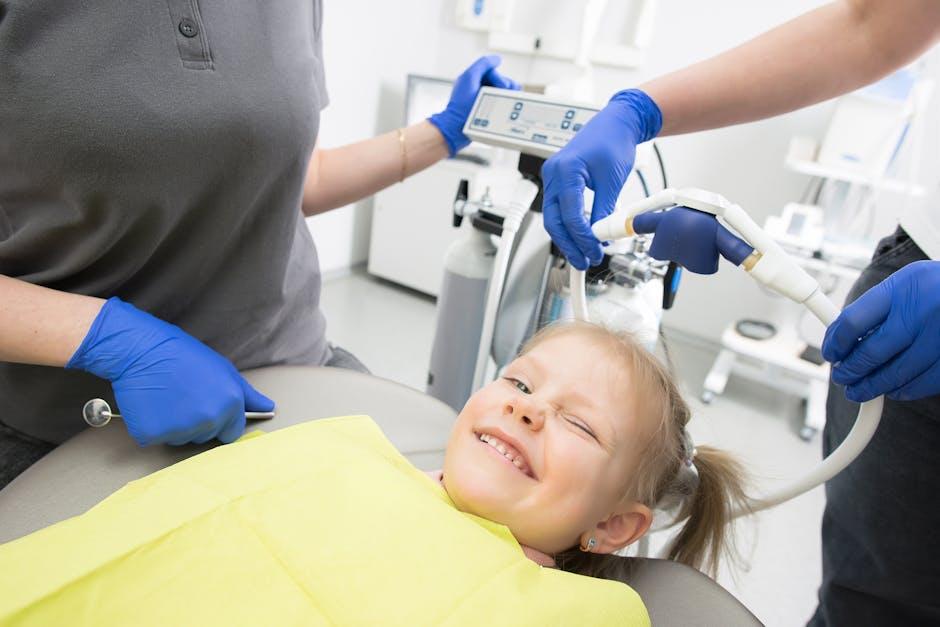
1 in 3 Kids Has Dental Problems, Poll Finds – U.S. News & World Report
Oral health is a cornerstone of overall wellbeing, especially in children whose developing smiles reflect more than just dental hygiene—they reveal health, nutrition, and accessibility to care. A recent poll, highlighted in U.S. News & World Report, reveals a startling fact: 1 in 3 kids has dental problems. This statistic raises urgent questions regarding pediatric oral health in the United States and sheds light on the challenges families face.
Understanding the Poll Results: What Does “1 in 3 Kids Has Dental Problems” Really Mean?
The poll conducted across the U.S. surveyed thousands of parents and guardians, collecting data on common dental issues among children aged between 2 and 17. The findings clearly showed that 33% of these children reported issues ranging from cavities and tooth decay to gum inflammation and sensitivity. Here’s a snapshot summary:
| Type of Dental Problem | Percentage of Affected Kids |
|---|---|
| Cavities / Tooth Decay | 24% |
| Gum Inflammation / Gingivitis | 7% |
| Tooth Sensitivity / Pain | 5% |
| Other Dental Issues | 4% |
Source: U.S. News & World Report poll, 2024
Why Are Dental Problems So Common Among Children?
Multiple factors contribute to the high prevalence of dental problems in children. Understanding these helps parents and caregivers take proactive steps:
- Poor Oral Hygiene Habits: Children who do not brush or floss regularly are more prone to cavities and gum issues.
- Diet and Sugar Intake: Frequent consumption of sugary snacks and beverages fuels bacteria that cause tooth decay.
- Lack of Access to Dental Care: Many families, particularly in underserved communities, face barriers in visiting dentists regularly.
- Limited Awareness: Parents might underestimate the importance of early dental check-ups or the signs of developing issues.
- Fluoride Deficiency: Insufficient fluoride exposure, whether in water or toothpaste, can increase cavity risk.
Common Signs of Dental Problems in Kids
Parents should watch out for these symptoms that could indicate dental problems in their children:
- Persistent tooth pain or sensitivity
- Visible holes or dark spots on teeth
- Red, swollen, or bleeding gums
- Bad breath that doesn’t resolve with brushing
- Difficulty eating or chewing
Long-Term Impact of Childhood Dental Problems
The consequences of untreated dental issues during childhood stretch far beyond cavities and discomfort:
- Speech and Development: Poor oral health can affect speech clarity and jaw development.
- School Attendance/Performance: Dental pain is a significant cause of missed school days, impacting learning.
- Self-esteem and Socialization: Visible dental problems can negatively affect a child’s confidence and peer relationships.
- Higher Risk of Adult Dental Issues: Early dental problems often predict chronic oral health challenges.
Practical Tips to Prevent Dental Problems in Kids
Prevention is always better than cure. Here are actionable tips to keep your child’s smile healthy:
- Start Early: Begin oral hygiene when the first tooth erupts using a soft baby toothbrush.
- Establish Routine Brushing: Encourage brushing twice daily with fluoride toothpaste for at least two minutes.
- Limit Sugary Foods and Drinks: Reduce frequency and encourage water consumption instead of sugary beverages.
- Schedule Regular Dental Visits: The American Academy of Pediatric Dentistry recommends a first dental visit by age one.
- Use Fluoride Treatments: Fluoride varnishes or supplements can strengthen enamel and prevent decay.
- Educate and Motivate: Teach children the importance of oral care through fun activities and reward systems.
Home Dental Care Checklist for Parents
| Task | Frequency | Benefits |
|---|---|---|
| Brushing Teeth | 2 times daily | Removes plaque, prevents cavities |
| Flossing | Once daily | Clears between teeth, prevents gum disease |
| Dental Check-Up | Every 6 months | Early detection of problems |
| Limiting Sugary Snacks | Daily moderation | Reduces acid attack on enamel |
Case Study: How Early Intervention Transformed One Child’s Dental Health
Emily, a 7-year-old girl from Ohio, struggled with frequent cavities and tooth sensitivity. Her parents initially overlooked symptoms, attributing them to normal childhood discomfort. After attending a school dental health seminar, they decided to visit a pediatric dentist. Here is what changed:
- Comprehensive dental examination: Revealed early-stage cavities and mild gingivitis.
- Custom oral health plan: Included teaching Emily proper brushing and flossing techniques.
- Diet modifications: Reduced Emily’s intake of sugary snacks and introduced more calcium-rich foods.
- Fluoride treatments: Applied every visit to strengthen teeth enamel.
- Regular follow-ups: Resulted in no new cavities reported over the next year.
Emily’s experience shows how awareness, early dental care, and commitment to oral hygiene can reverse troubling trends.
Why U.S. News & World Report’s Poll Matters for Parents and Policymakers
The poll highlights a critical public health concern and serves as a call to action:
- For parents: Emphasizes the importance of vigilance and routine dental care to safeguard children’s health.
- For healthcare providers: Encourages increased outreach and education efforts targeting families.
- For policymakers: Supports advocating for improved access to pediatric dental services, especially in underserved areas.
Conclusion: Taking the Bite Out of Pediatric Dental Problems
The finding that 1 in 3 kids has dental problems is both a wake-up call and a beacon guiding the way forward. With the right knowledge, consistent habits, timely dental care, and thoughtful support from communities and authorities, we can greatly reduce dental struggles for children across America.
Remember, a healthy smile is a confident smile. Start early, stay informed, and create a dental care routine that protects your child’s precious smile for a lifetime.


